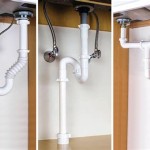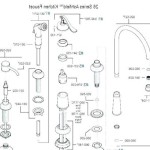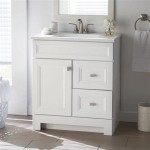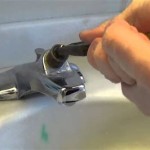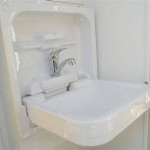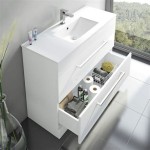How To Unblock a Bathroom Sink With Baking Soda
A clogged bathroom sink is a common household problem that can disrupt daily routines. Hair, soap scum, and other debris accumulate in the drainpipe, gradually restricting water flow. While commercial drain cleaners offer a solution, they often contain harsh chemicals that pose environmental and health risks. A safer and more environmentally friendly alternative is using baking soda, a common household ingredient with effective unclogging properties.
This article provides a detailed guide on how to unblock a bathroom sink using baking soda, outlining the necessary materials, step-by-step instructions, and preventative measures to minimize future blockages. The process is generally straightforward and can be completed with minimal tools and effort. However, it's crucial to understand the underlying principles and potential limitations of this method to ensure optimal results.
Understanding the Clog Formation and Baking Soda's Role
Bathroom sink clogs typically form due to the accumulation of organic materials such as hair, skin cells, soap residue, toothpaste, and small objects that accidentally fall into the drain. These materials bind together over time, creating a sticky mass that restricts water flow. The drainpipe's design, often featuring a U-bend (P-trap), is intended to trap debris and prevent sewer gases from entering the home. However, the P-trap also serves as a prime location for clog formation.
Baking soda (sodium bicarbonate) functions as a mild abrasive and a deodorizer. When combined with an acid, such as vinegar, it triggers a chemical reaction that produces carbon dioxide gas. This fizzing action helps to dislodge the blockage and break down the organic matter contributing to the clog. The added benefit is that this combination will also help eliminate foul odors emanating from the drain. While baking soda alone may not be sufficient for severe clogs, it effectively addresses many common blockages.
Materials Needed for Unclogging
Before commencing the unclogging process, gather the following materials:
- Baking soda (sodium bicarbonate)
- White vinegar
- Boiling water
- Plunger (optional, but recommended)
- Screwdriver or pliers (for disassembling the P-trap, if necessary)
- Bucket or container (to catch water from the P-trap)
- Gloves (to protect hands)
- Old toothbrush or small brush (for cleaning the drain stopper)
- Clean rags or paper towels
Having all the necessary materials readily available streamlines the unclogging process and minimizes potential delays. The inclusion of a plunger is particularly important, as it can provide additional force to dislodge stubborn clogs that may not respond solely to the baking soda and vinegar mixture.
Step-by-Step Instructions for Unclogging with Baking Soda and Vinegar
Follow these steps carefully to unblock your bathroom sink using baking soda and vinegar:
- Preparation: Clear the area around the sink and cover any surfaces that might be splashed with water or cleaning solutions. Wear gloves to protect your hands from potential irritants.
- Remove the drain stopper: Most bathroom sinks have a drain stopper mechanism that prevents water from draining. Depending on the stopper type, it can be removed by lifting it straight up, twisting and pulling, or by accessing the linkage mechanism located beneath the sink. Consult the sink manufacturer's instructions if needed. Clean the stopper thoroughly with an old toothbrush or small brush to remove any accumulated debris.
- Pour baking soda into the drain: Pour approximately one cup of baking soda down the drain opening. Use a funnel if necessary to avoid spilling. Ensure that the baking soda reaches the P-trap, where the clog is most likely located.
- Add vinegar to the drain: Immediately after pouring the baking soda, pour one cup of white vinegar down the drain. The combination of baking soda and vinegar will create a fizzing reaction as carbon dioxide gas is released.
- Let the mixture sit: Allow the baking soda and vinegar mixture to sit in the drain for at least 30 minutes, or preferably overnight for stubborn clogs. This allows the fizzing action to break down the organic matter and dislodge the blockage. To further enhance the effect, cover the drain opening with a stopper or a damp cloth to contain the gas pressure within the drainpipe.
- Flush with boiling water: After the waiting period, carefully pour a pot of boiling water down the drain. The hot water helps to dissolve any remaining debris and flush the loosened clog through the drainpipe. Exercise caution when handling boiling water to avoid burns.
- Test the drain: Turn on the faucet and observe the water flow. If the water drains freely, the clog has been successfully removed. If the drain is still slow or clogged, proceed to the next step.
- Plunge the drain (optional): If the drain remains clogged after the baking soda and vinegar treatment, use a plunger to create suction and force water through the drainpipe. Ensure that there is enough water in the sink to cover the cup of the plunger. Create a tight seal around the drain opening with the plunger and repeatedly plunge up and down for several minutes. Periodically check the drain to see if the water is draining more quickly.
- Repeat the process: If the drain is still not clear, repeat the baking soda and vinegar treatment followed by plunging. Multiple iterations may be necessary to dislodge particularly stubborn clogs.
- Disassemble the P-trap (if necessary): If the above methods fail to clear the clog, it may be necessary to disassemble the P-trap, the curved section of pipe beneath the sink. Place a bucket or container underneath the P-trap to catch any water that may be trapped inside. Using a wrench or pliers, carefully loosen the slip nuts that connect the P-trap to the drainpipe. Once the slip nuts are loosened, remove the P-trap and inspect it for any accumulated debris. Remove any visible clogs manually.
- Clean and reassemble the P-trap: Thoroughly clean the P-trap with water and a brush to remove any remaining debris. Reassemble the P-trap, ensuring that the slip nuts are tightened securely to prevent leaks.
- Test the drain again: Turn on the faucet and observe the water flow. If the water drains freely after cleaning the P-trap, the clog has been successfully removed. If the drain is still slow or clogged, the clog may be located further down the drainpipe, requiring professional plumbing assistance.
Preventative Measures to Avoid Future Clogs
Preventing clogs is always preferable to dealing with them after they form. Implement the following preventative measures to minimize the likelihood of future bathroom sink blockages:
- Use a drain strainer: Install a drain strainer or mesh screen in the sink drain to catch hair, soap scum, and other debris before they enter the drainpipe. Clean the strainer regularly to prevent buildup.
- Avoid pouring grease or oil down the drain: Grease and oil solidify as they cool, contributing to clog formation. Dispose of grease and oil in a separate container.
- Flush the drain regularly: Periodically flush the drain with hot water to help prevent the accumulation of debris.
- Clean the drain stopper frequently: Regularly clean the drain stopper to remove accumulated hair and soap scum.
- Avoid dropping small objects down the drain: Be mindful of small objects such as jewelry, pills, and other items that can accidentally fall into the drain.
- Consider enzymatic drain cleaners: Enzymatic drain cleaners contain beneficial bacteria that break down organic matter, preventing clog formation. Use them according to the manufacturer's instructions.
By consistently implementing these preventative measures, homeowners can significantly reduce the frequency of bathroom sink clogs and maintain optimal drain performance. Regular maintenance is essential for preserving the functionality and longevity of plumbing systems.
If, despite these efforts, the sink remains clogged, it may indicate a more severe blockage further down the drain line or a problem with the plumbing system itself. In such cases, it's recommended to seek professional plumbing assistance to diagnose and resolve the issue effectively.

Unclog Drains Naturally With Baking Soda And Vinegar Mom 4 Real

Why You Should Never Use Baking Soda And Vinegar To Clean Clogged Drains Bren Did

How To Make Eco Friendly Sink And Drain Cleaner Bond Cleaning In Brisbane

Can You Really Clean The Drain With Baking Soda And Vinegar

Unclog Drains Naturally With Baking Soda And Vinegar Mom 4 Real

How To Unclog Bathroom Sink With Baking Soda And Vinegar

How To Unclog A Drain With Baking Soda And Vinegar
Tiktok To Unclog Drains With Baking Soda And Vinegar Works

How To Easily Unclog A Drain Without Harsh Chemicals Baking Soda Vinegar

How To Unclog Bathroom Sink With Baking Soda And Vinegar Storables
Related Posts
